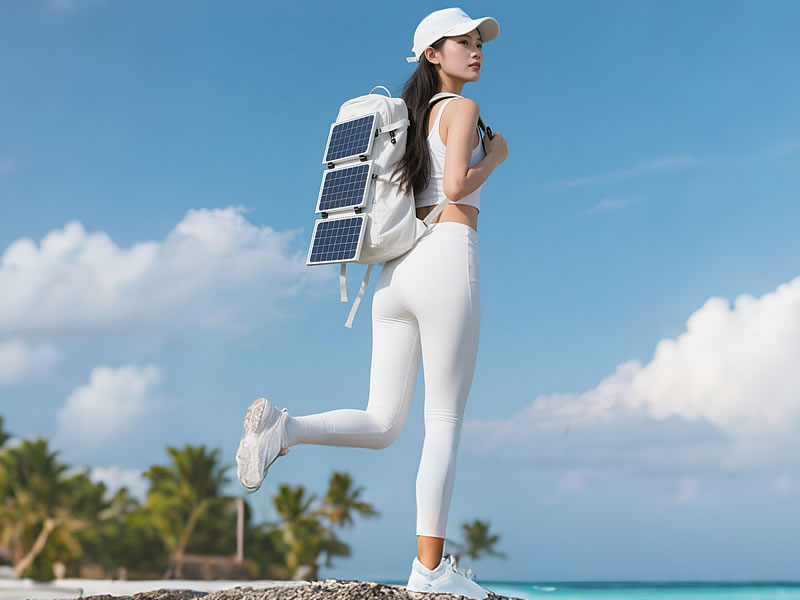Are solar-powered lightweight gadgets reliable for camping?
Solar-powered devices promise eco-friendly, off-grid energy—but can they truly replace traditional chargers and power banks in the unpredictable wilderness? This guide breaks down the reliability of solar camping gadgets, covering performance in real-world conditions, top product recommendations, and strategies to maximize efficiency.

How Solar Camping Tech Works (And Its Limits)
The Science Behind Solar Charging
Portable solar panels convert sunlight into electricity via photovoltaic cells. Key metrics:
- Wattage (10W–28W): Determines charging speed.
- Efficiency (15%–25%): Higher-end panels (e.g., Goal Zero Nomad 28) convert more sunlight.
- Weight (8 oz–2 lbs): Ultralight options trade durability for portability.
Critical Limitation: Solar output drops drastically in cloudy weather, under tree cover, or at high latitudes.
Testing Solar Gadgets in Real Camping Scenarios
1. Phone Charging: Sunny vs. Cloudy Days
- Best Case: A 20W panel (e.g., BigBlue 28W) charges a phone in 2–3 hours under direct sun.
- Worst Case: Overcast skies extend charging to 6–8 hours—often impractical.
2. Powering Larger Devices
- Tablets/Drones: Requires 20W+ panels and patience. A Jackery SolarSaga 60 (60W) charges a drone battery in 4 hours (full sun).
- LED Lights: Low-draw devices like LuminAID solar lanterns (5W) perform reliably with daily sun exposure.
3. Extreme Conditions
- Desert Heat: Panels overheat, reducing efficiency by 10–15%.
- Rain/Humidity: Waterproof models (e.g., Anker PowerPort Solar Lite) survive, but output plummets.
Top Solar-Powered Camping Gear: Pros & Cons
| Product | Weight | Wattage | Best Use Case | Reliability Score (1–5) |
|---|---|---|---|---|
| Goal Zero Nomad 28 | 1.4 lbs | 28W | Basecamp charging | ⭐⭐⭐⭐ |
| BigBlue 28W | 1.3 lbs | 28W | Backpacking + phones | ⭐⭐⭐ |
| LuminAID PackLite | 4 oz | 5W | Emergency lighting | ⭐⭐⭐⭐⭐ |
| Nekteck 21W | 1 lb | 21W | Budget-friendly | ⭐⭐ |
Key Takeaway: Higher-wattage panels (20W+) paired with a power bank offer the best reliability.
5 Strategies to Boost Solar Reliability
- Pair with a Power Bank: Store solar energy in a high-capacity bank (e.g., Anker PowerCore 26800) for nighttime use.
- Optimize Panel Placement: Angle panels toward the sun, adjust every 2 hours, and avoid shadows.
- Prioritize USB-C Devices: Newer phones/headlamps charge faster with efficient USB-C inputs.
- Use MPPT Controllers: Advanced regulators (e.g., Victron SmartSolar) maximize energy harvest by 20–30%.
- Hybrid Charging: Combine solar with hand-crank or fuel-powered backups (e.g., BioLite CampStove 2).
When Solar Makes Sense (And When It Doesn’t)
Ideal For:
- Sun-Drenched Climates: Desert, alpine, or savanna environments.
- Long-Term Basecamps: Multi-day stays with time to recharge.
- Low-Power Devices: LED lights, GPS watches, or small cameras.
Avoid For:
- Cloudy/High-Latitude Trips: UK, Pacific Northwest, or winter camping.
- Power-Hungry Gear: CPAP machines, electric coolers, or DSLR cameras.
- Ultralight Backpacking: Panels add weight vs. a single 20,000mAh power bank.
Solar Fail-Safe: Backup Plans Every Camper Needs
- Power Bank Minimum: 10,000mAh can charge a phone 2–3 times.
- Manual Chargers: Hand-crank radios (e.g., *Eton FRX3+) or kinetic energy devices.
- Vehicle Reliance: Use car outlets if camping near roads.
The Verdict on Solar Reliability
Solar gadgets can work for camping but require realistic expectations. They excel as supplements, not replacements, in sunny climates. For most backpackers, a premium power bank (e.g., Nitecore NB10000, 5.3 oz) offers more consistent performance. However, eco-conscious campers or long-term adventurers will appreciate solar’s renewable benefits—if paired with smart strategies.
Final Tip: Test your solar setup at home before relying on it in the wild!






